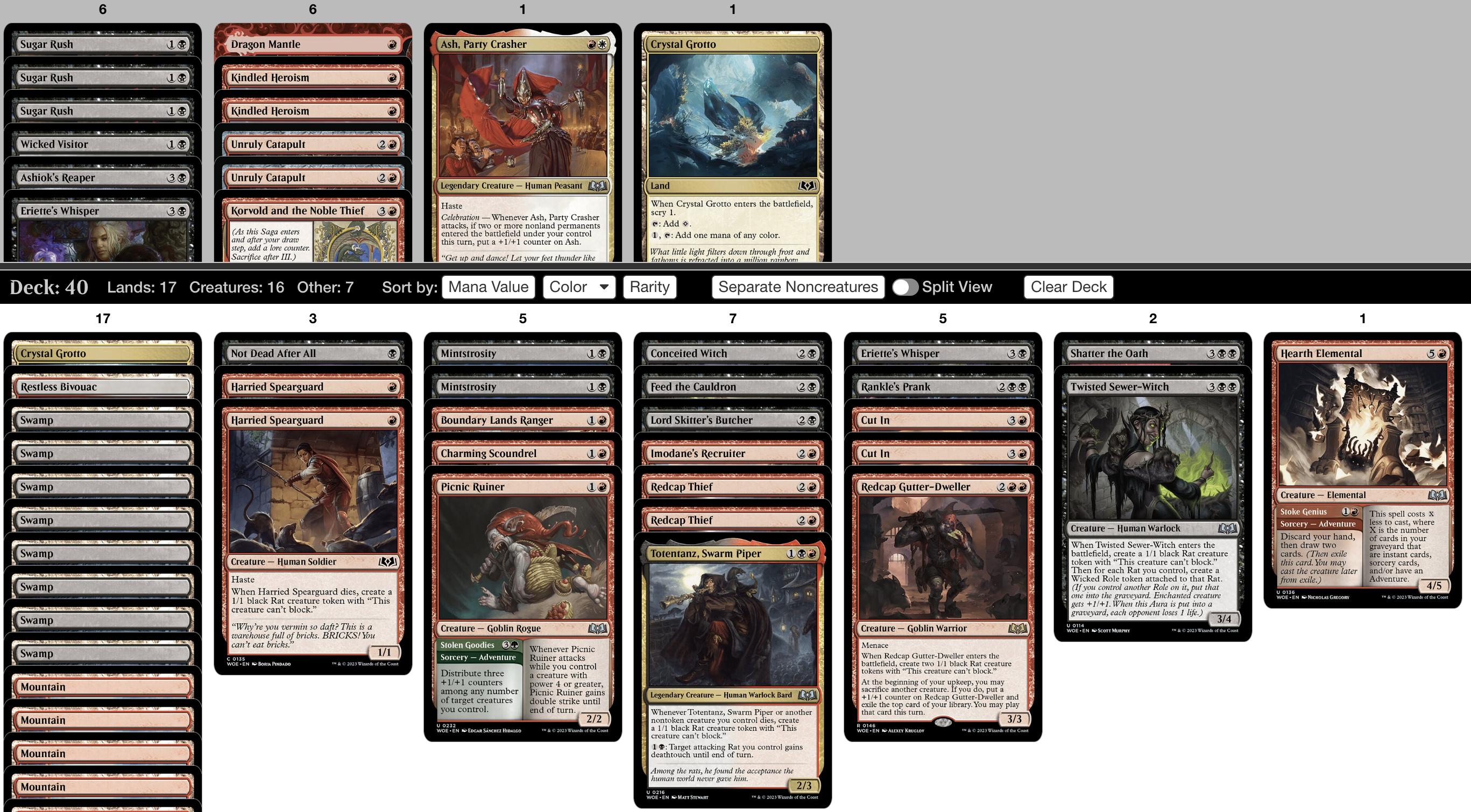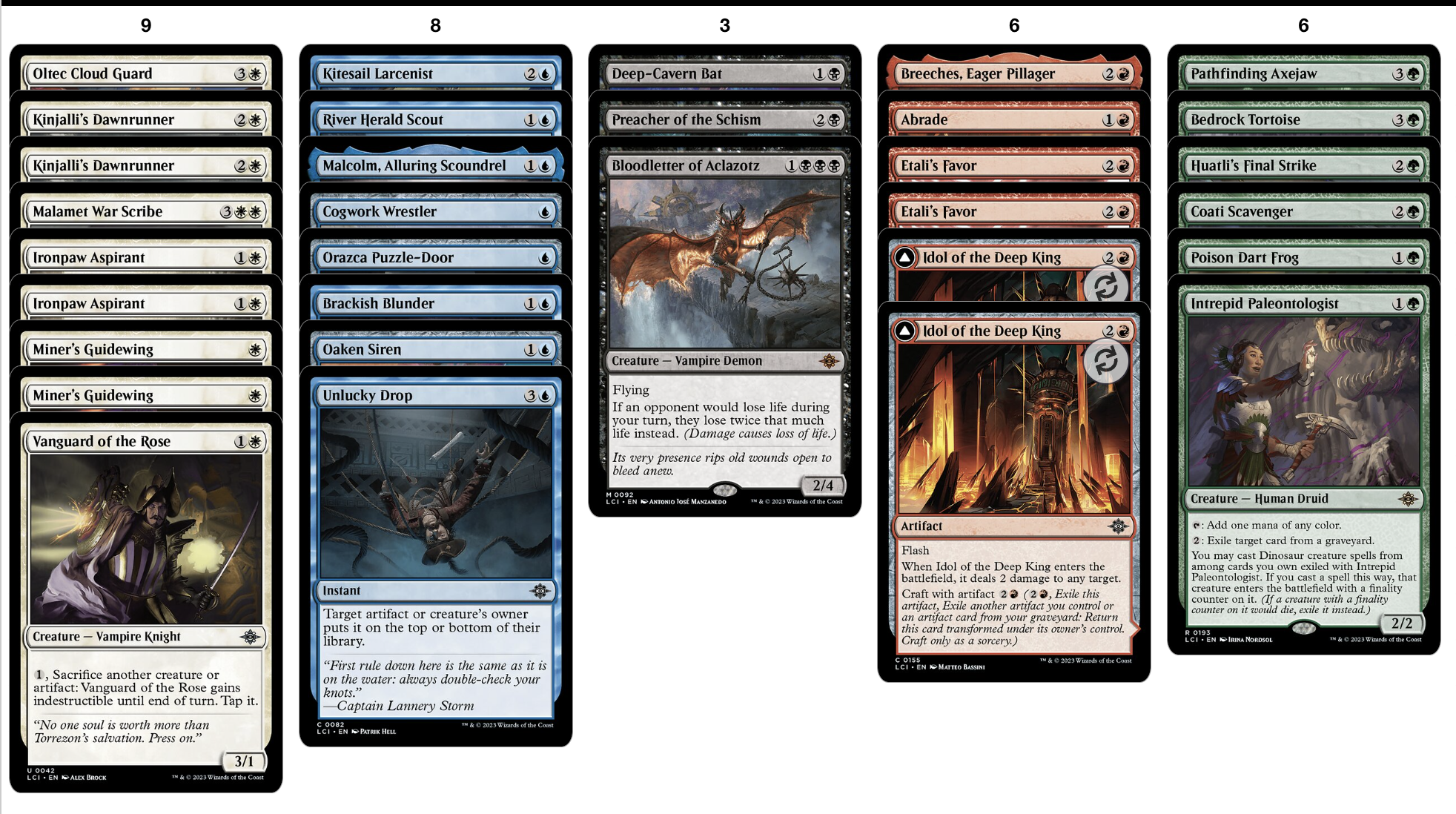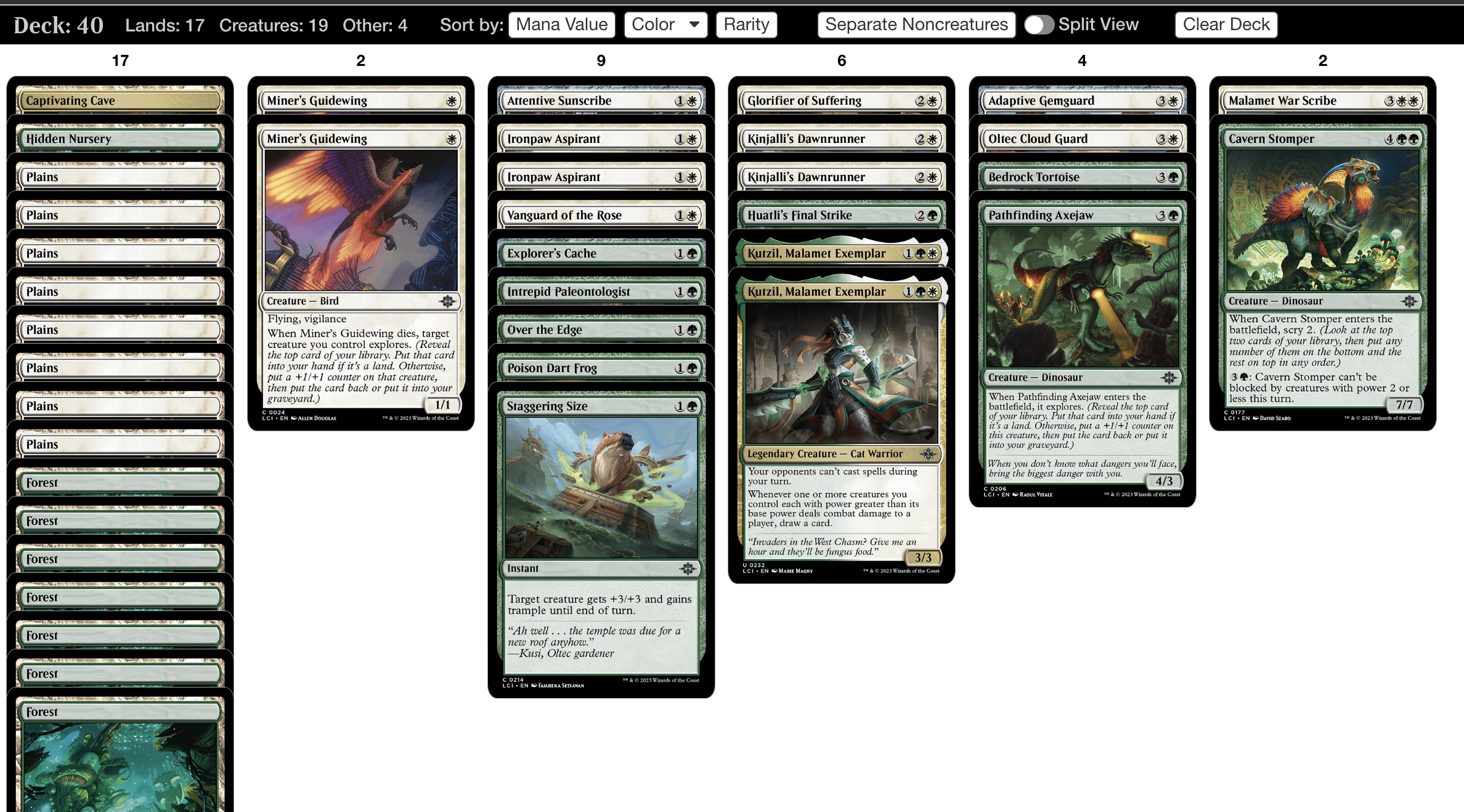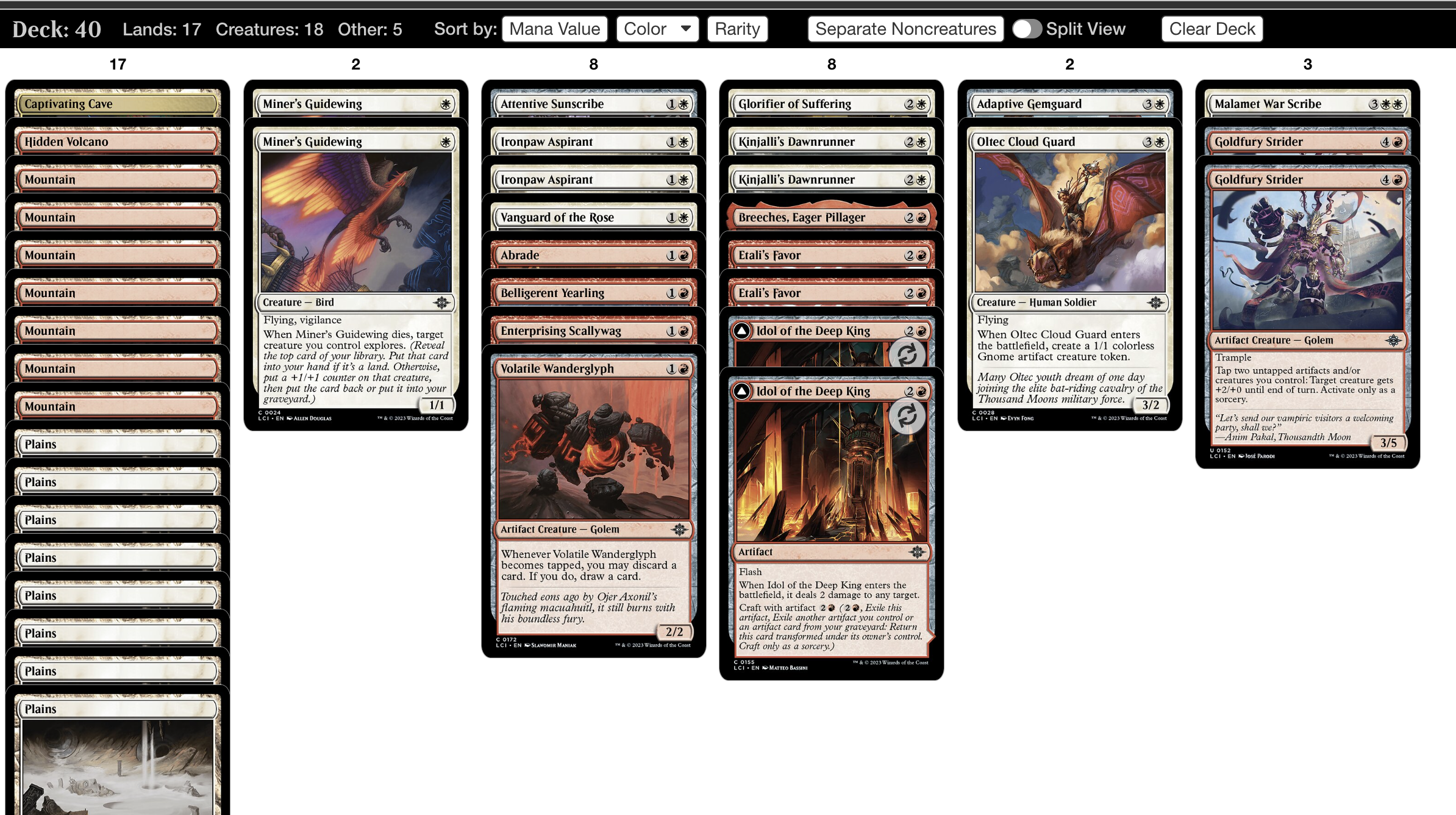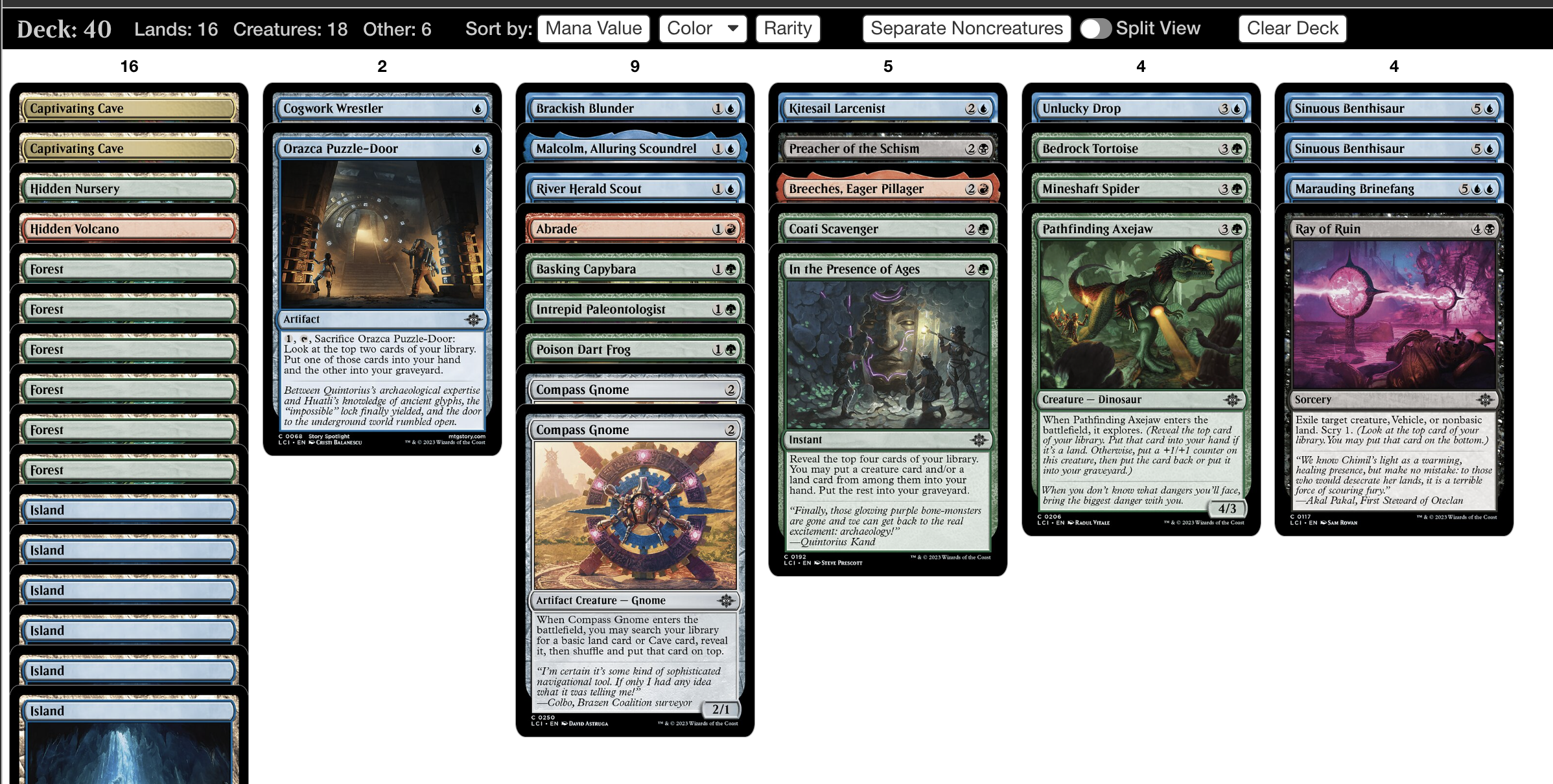Using Every Part of a Sealed Pool
11/23/2023
When I see people post limited trophies, it's very often in the form of just a screenshot of the deck. Maybe there will be some details included, but I think it's pretty rare to see people talk about sideboards.
To be fair, the nature of social media incentivizes this; and to be realistic, Bo1 is a lot more popular than Bo3, so it makes sense that people would focus on just 40 cards, and not the whole pool. But I think it's quite a shame.
Sideboarding is a very important skill in limited, and is very relevant outside of the confines of Arena Bo1. And even if you're committed to Bo1, the lessons learned from knowing how to sideboard well are very applicable - after all, if you don't know how swapping out various cards affects how your deck plays, how can you tell which configuration of 40 cards is the best?
Nowhere is this more important than sealed. With draft, it's not uncommon to have a very obvious set of 23 cards to play, and nothing you would ever consider swapping in. But in sealed, there is always something you can do.
So let's talk about how to look out for these things.
Part 1: Obvious Tech Cards
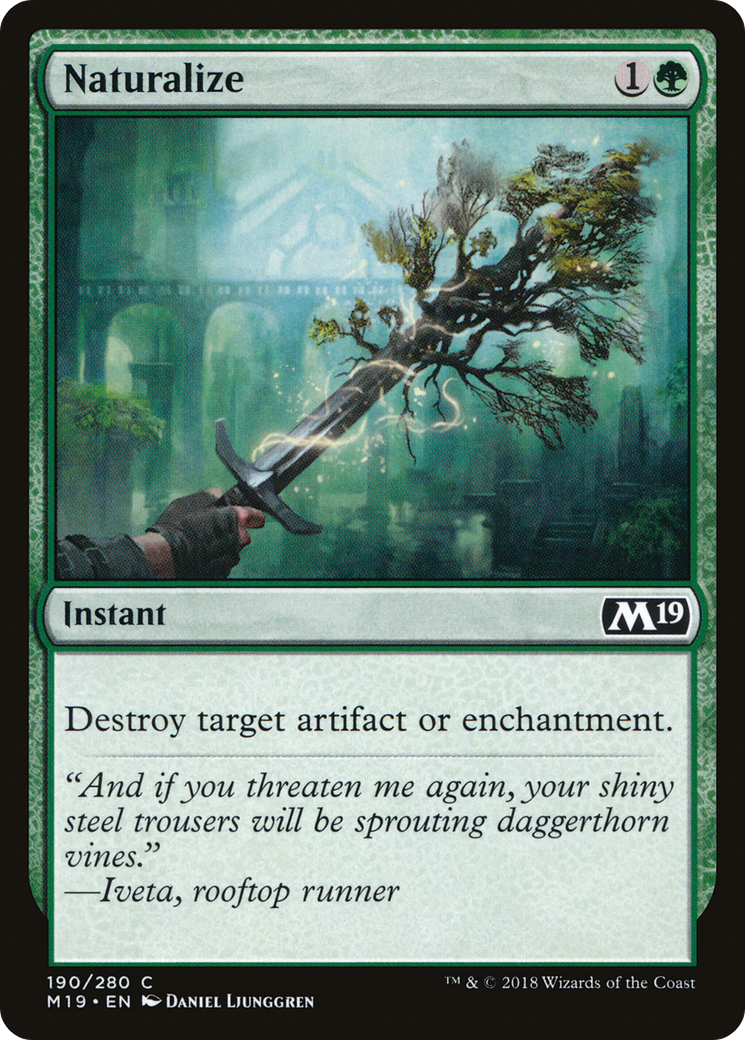
When people talk about sideboarding in limited, the first thing that comes to mind is almost certainly the "obvious sideboard cards". Things like
spells that destroy artifacts or enchantments, or small and narrow sweeper effects, or narrow removal, or conditional counterspells.With the direction of design these days, pure sideboard cards like actual factual Naturalize are fairly rare; most of the time there's some modality added (like with
Over the Edge) so that you can theoretically maindeck it in Bo1.But still, this is an important class of sideboard cards to be aware of. And while it's probably the easiest kind of sideboarding, there still is a bit of nuance. Specifically, you should be asking yourself: does this card do something that actually matters?
Your opponent simply having a lot of targets for something like
spider food isn't enough reason to side it in. If none of their targets actually matter enough to spend 3 mana at sorcery speed to answer (maybe they have a bunch of 1/1 fliers or 2/2 artifact creatures with ETB abilities where the body doesn't matter much), then it's just not worth it.And on the flip side, maybe you don't see very many targets, but the few targets you do see are game-defining. Maybe they have
a bomb that you don't otherwise have a way to deal with. Then you might want to side in such a card, even if there's some fraction of games where it doesn't do anything. Extra card filtering, or extra modes on these sideboard cards, can help a lot in these cases.Finally, you should of course consider your deck as well. Even if they have theoretically juicy targets for your conditional removal spell, maybe your deck doesn't really want that effect, and would rather focus on beating down as aggro, or otherwise furthering your own plan.
Part 2: Terms of Engagement
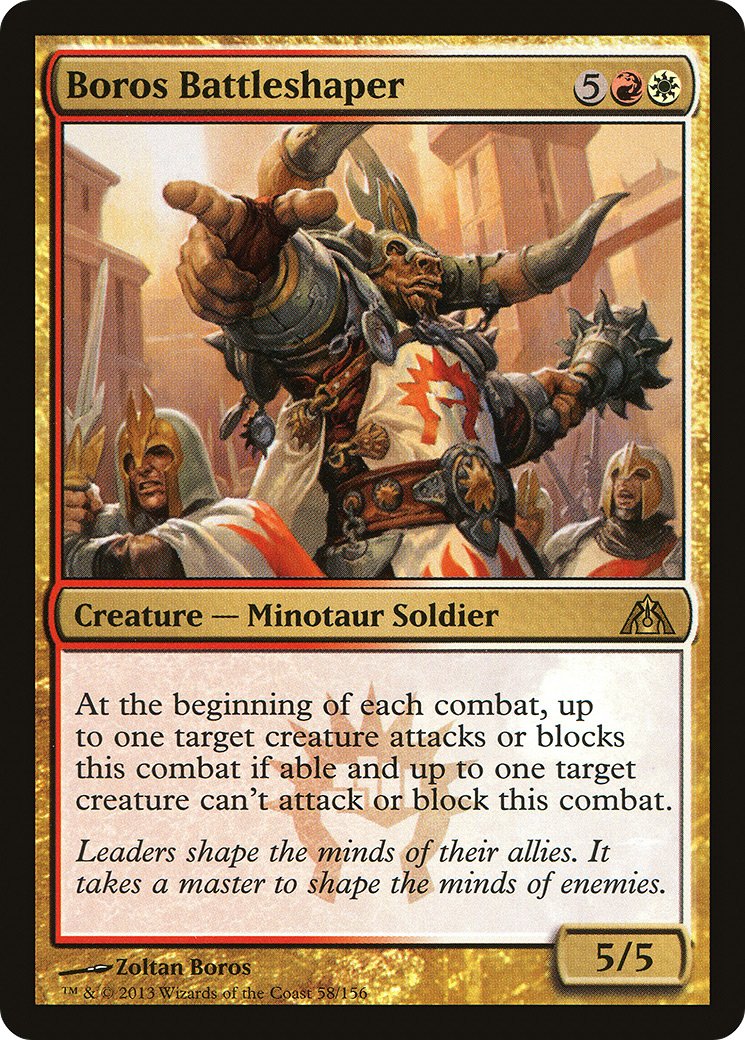
In some senses, sideboarding in limited is, at its core, the same as sideboarding in constructed: the goal is to find the configuration of your pool (75 in constructed) that works best against your opponent's deck.
But, of course, limited is a lot more complex. In constructed, you can do a bunch of testing against various meta decks to develop sideboard plans with specifically tailored cards - this is impossible in limited. Instead, to be able to sideboard well in limited, you need to be able to translate the information you get from game 1 into a prediction for how the matchup will generally play out, and then translate that into a sideboard plan, all on the fly.
The best way to get better at this is simply just more experience - as you play more, you'll be able to recognize these patterns of play easier, better, and more quickly. But in lieu of more experience, I can certainly offer a few tips and guidelines for what to be paying attention to:
The most important thing is to first figure out what your deck's gameplan is. Are you looking to be aggressive and kill your opponent quickly? Are you winning the long game by grinding out your opponent or playing bombs? What tools do you have to answer your opponent's threats?
Then, ask those same questions about your opponent's deck, and consider how these two gameplans interact. One way you can frame this is: what are the key cards in the matchup, and how does that shape your gameplan?
Here are some examples of some common key cards in various matchups, and ways they can affect your gameplan:
- the bombs both decks have
"I want to have removal for
Akal Pakal""I want more recursion for when they kill my Akal Pakal"
- flyers
"I want to protect my flyers"
"I want to have removal or reach blockers for my opponent's flyers"
- card advantage spells
"I want to kill my opponent before they bury me in card advantage with
Into the Fae Court""I want to have more card advantage myself in order to compete"
- important blockers
"I want
large-toughness blockers that my opponent can't get through""I want to have more evasion as their blockers are too good"
- early aggressive attackers
"I want to kill my opponent before they can get setup"
"I want to play more
cheap tempo cards to not die early"This way of framing things isn't limited to just individual cards - sometimes an important part of a matchup is similar the statlines of various creatures. If your opponent has a lot of 2/1s, then 1/3s and 1/4s become better. If they have a lot of 4/4s and not a lot of small creatures, then 4/1s might become better. If your opponent has a lot of 2 damage removal, 3+ toughness creatures become better.
For example, consider my sealed deck from day 1 of the Vegas 100k (shown with the pool filtered to RB cards to show feasible sideboard options):
At first glance, you might think that this deck is fairly low on sideboard options - I'm pretty much just playing the 23 best red and black cards in my pool, and the cards in my sideboard are basically all mediocre in some way, not really cards you're looking to put in most RB decks in WOE.
However, there's actually quite a lot of small swaps you can make here, all dependent on the matchup! So let's go through my thought process for figuring out how and when to make these small swaps:
First of all: how does this deck play? In this case, I'm playing an aggressive deck that is looking to curve out with creatures and get through blockers with
Cut In. I have some powerful bombs as well in Imodane's Recruiter and Redcap Gutter-Dweller, and just pretty high quality cards across the board.Then, the question is: how can my opponent beat this gameplan?
1. They race me. Maybe they're also aggressive, in which case I probably want to play all the 2s I can, even if they're mediocre.
Wicked Visitor would be a lot better than Eriette's Whisper here. Even Kindled Heroism could be good in some situations like this - if you're constantly getting into combat and just need a cheap way to interact favorably, it does the trick.2. They resolve an expensive bomb that I can't deal with that takes over the lategame. Something like
Expel the Interlopers or Realm-Scorcher Hellkite. In that case, maybe I want to attack their resources, especially if they have sketchy mana or a sketchy curve. A second copy of Eriette's Whisper could do quite a lot here, punishing them for relying too heavily on one slow card.3. They play 5 toughness blockers I can't get past. If my opponent is really good at blocking with creatures that I can't kill with Cut In, then maybe I have to find a way to kill them without attacking. Sounds like a job for
Unruly Catapult!4. They grind me out with card advantage. Whisper can, again, do some work here, but so can
Korvold and the Noble Thief. Normally it's way too slow to play, but if your opponent is going to drag out the games, it becomes a lot more appealing.These kinds of matchups certainly won't come up every time (though these are all real examples of what I sided in for various matchups in the 100k) - and even when they do come up, you might not draw the cards you sided in. Plus, there might also be times where the cards you see in game 1 just don't line up the same way in game 2, making your sideboarding less effective. But this is all about tiny edges, and those edges do add up!
Part 3: The Ol' Switcheroo
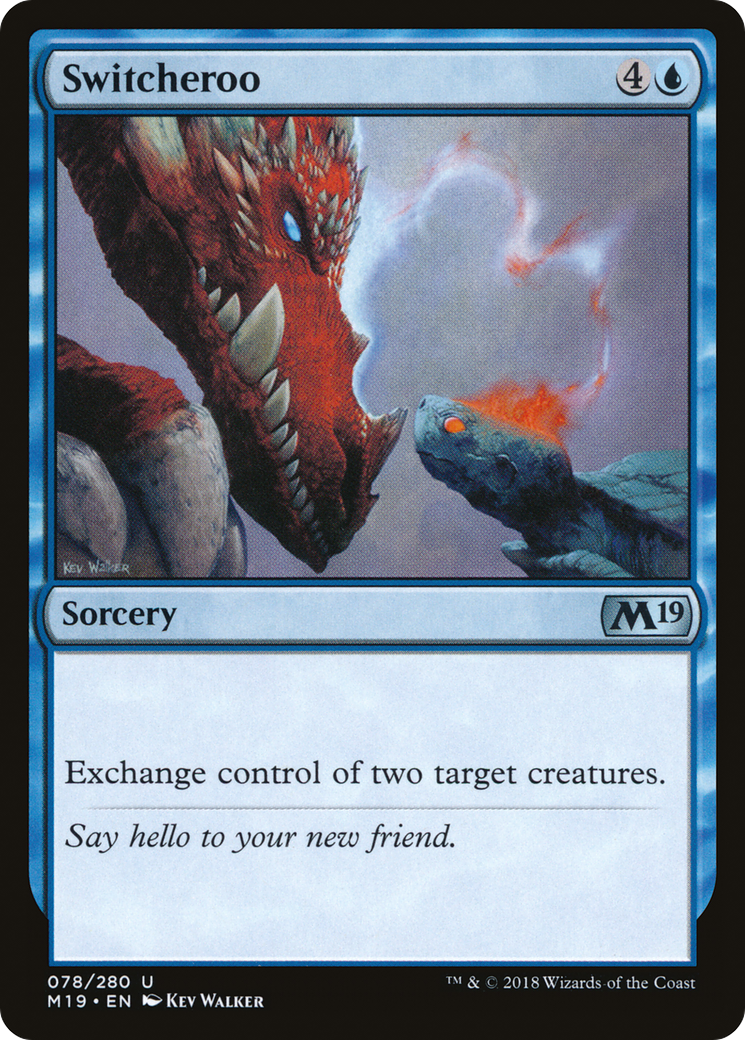
Of course, in sealed you can go a lot further than just swapping a few cards. You get 84-90 cards total - playing 23 of those cards isn't even utilizing a third of your pool!
Enter the deck swap. This won't always be possible - there are many pools (like my WOE 100k pool) that really don't have a realistic second deck. Maybe the cards in your other colors are just really bad, or maybe the best deck is just so much better than the others that it's hard to imagine ever wanting to not play it.
But I suspect it's also correct more often than most would expect. The default I've seen many people do is to just build one deck out of your sealed pool, and focus on honing that one deck. But ignoring the other parts of your pool is giving up quite a lot! Even if it doesn't look great at first glance, you can often be surprised by just how much you can do with one pool.
Of course, this all takes a lot of time. This is less of a concern for something like the Arena Open, where you mostly have as much build time as you could want, but at any competitive paper event, you do have a limited build time. It might very well be the case that it's more effective to use that time to focus on just one deck.
However, you will still have extra time on your hands between rounds, and that's a perfect time to think about alternate builds. Competitive paper events might not have continuous construction (as you had to submit a game 1 decklist), but you sure can continue to construct sideboard plans!
So how do you effectively construct multiple decks for the purpose of deck swapping?
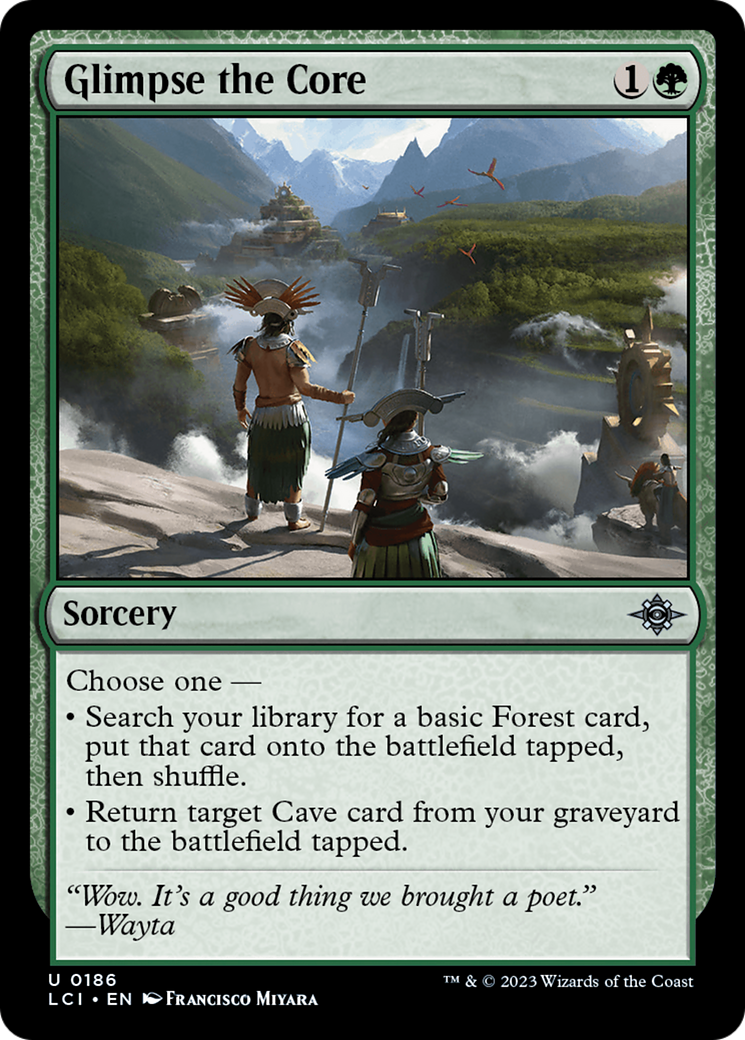
Well, you could look at every single color combination, and just try to build a deck of those colors. This isn't a bad approach, but also isn't very efficient - there will be a lot of color combinations that just don't have any chance of being strong enough to compete.
Instead, what I like to do, and what I would recommend, is to focus on "core" sets of cards in each color. What do I mean by this? Well, when going through a pool for the first time, I like organizing cards by color first, and then picking out the set of cards in each color that I'm most interested in playing if I'm playing those colors.
Here's an example pool we'll work with; this was the first thing I randomly generated from Draftsim:
I might also separate out some piles of synergy packages - in this set, for example, maybe things like caves, or buildaround cards that make other cards better.
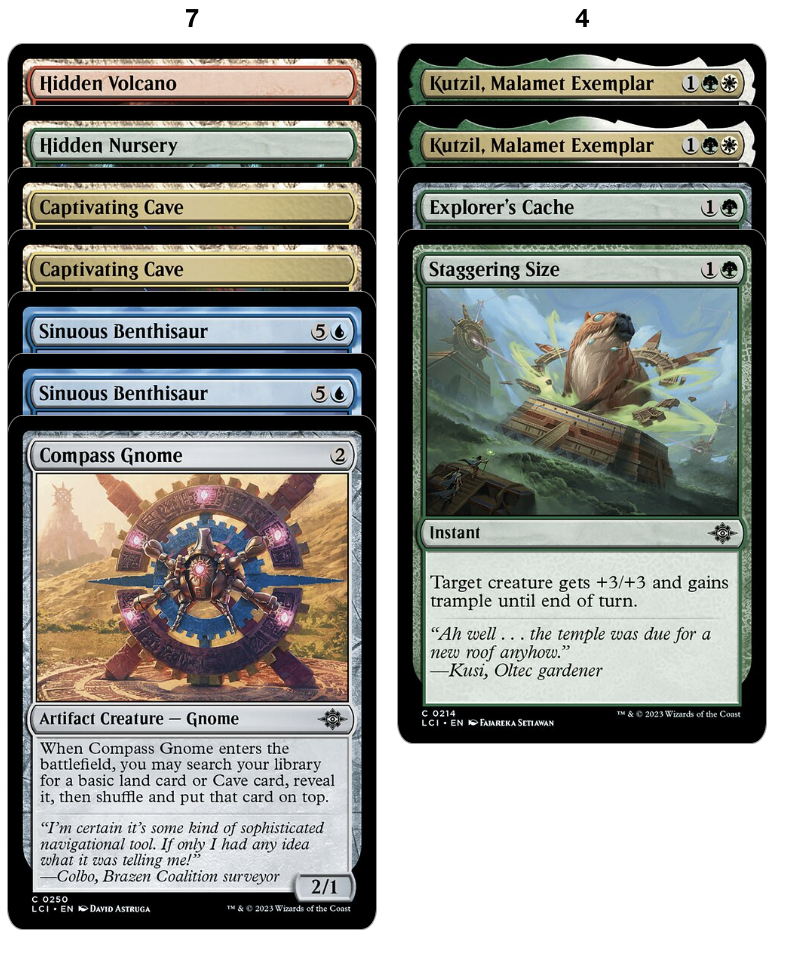
a couple synergy packages from the same pool
Then, I can identify what core sets of cards I want to build a deck around, and try to fit those with various colors.
For example, here I can see that my white is fairly deep and has some good aggression -
Miner's Guidewing into Ironpaw Aspirant is a nice package. So what do I pair it with?Well, green is an obvious choice, with the two gold uncommons.
But red can also pair pretty well with it.
Then, you could look at the blue core of cards, along with the cave synergy package, and combine it with green to build a slower, grindy deck making use of
Sinuous Benthisaur and Intrepid Paleontologist. You can be pretty greedy with the mana too - with Compass Gnome finding Captivating Cave, you have six 5c sources, so you can support some wild splashes.There might also be more builds in this pool - I'll leave it as an exercise for the reader to see if you can find anything else. But for now, I want to focus on these three for the sake of example.
Differentiation
So how do you decide which of these decks to present game 1, and when you should deck swap into the others?
Well, I don't have great advice to give for the first question. You should try to present your "best" deck, one that will do best against a large range of other decks. But what that means is largely up to experience and vibes, in the end.
The second question, though, is what I want to focus on. How do you decide when to do a deck swap? The key question you want to ask for that is: for each of your decks, what are their strengths and weaknesses? Which strategies do each of your decks struggle against, and which strategies do they shine against?
The greedy pile above probably will do well against other slow decks. A slow matchup will give it time to setup, and it's pretty hard for it to lose a lategame with all the value it can accrue.
But on the other hand, it can be quite slow itself. While it has some tools like
Cogwork Wrestler and Brackish Blunder that can help keep it alive early, it's still somewhat weak to aggressive decks, especially with the greedy mana plan.The white aggressive decks are solid all around, with good evasive threats. You can kill opponent's pretty quickly, especially if they have an awkward curve.
The main thing these white decks are lacking is hard removal - if an opponent plays something like
Bonehoard Dracosaur, you'll have a very small chance of answering it.The difference between the white decks is a bit subtler. The main difference is that the red one has more removal options, but for small creatures - so if
Abrade and Idol of the Deep King are good in the matchup, the red deck might be better. And if they're not, the power of Kutzil, Malamet Exemplar probably makes green better.So, to put all of this together: against an aggressive deck with a lot of important X/2s, I'd want to play the red white deck. Against grindy deck, or a deck where I'd want to have more hard removal, I'd want to play the greedy pile. And against a deck where Kutzil is likely to take over the game, I'd want to play the white green deck.
This is, of course, not a fully comprehensive set of possible matchups, but a good example of some common things to consider. Each matchup will have its own nuances, and it's up to you to evaluate what cards matter in each matchup, and which of your possible decks does the best at attacking that matchup.
Conclusion
All of these sideboard plans are things you can think about before even starting your first match. But of course, as you're playing your games, you should also be thinking about how the matchup is going, and how that affects what you want in postboard games.
It's a lot to think about, but it's a very important skill. And while more practice and more experience is certainly the best way to hone this skill, I hope I've given you a good jump-start with this article.
#FreePalestine | Consider donating to UNWRA or PCRF, supporting protesters locally, and educating yourself.

